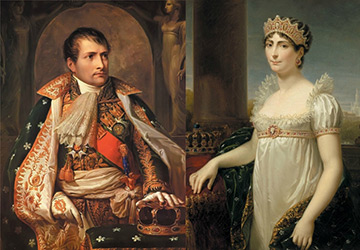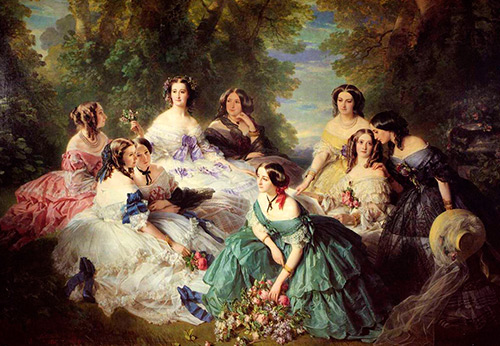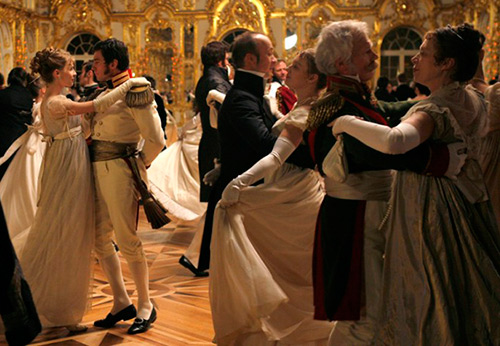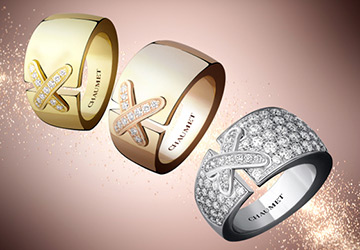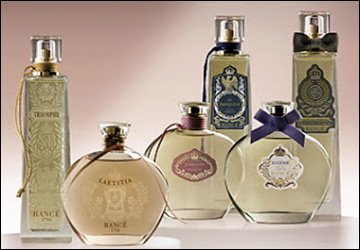Style
Style of Eugenie - Empress of France
French monarchs have always paid great attention to fashion. France was a trendsetter for all of Europe, including Russia. Writers and political thinkers, especially in the 18th century, contributed to the fact that French culture acquired a common European significance.
In 1852, Napoleon III came to power, the era of the Second Empire began. Emperor Napoleon III was the son of Louis Bonaparte, King of Holland (1806-1810) and Hortense de Beauharnais. After several unsuccessful attempts to seize power, in 1848 he was elected president of the republic, and in 1852 he became emperor of France. Shine and splendor returns to fashion - the second rococo or the fashion of Empress Eugenie.
The imperial court lived according to the strict court etiquette of the model of the First Empire, with numerous courtiers and the imperial guard. Napoleon III, like his uncle, the Emperor Napoleon, strove to dazzle Europe with pomp, splendor and wealth. Paris has become the center of fashion. At this time, the production of luxury goods is growing, which become one of the most important export items.
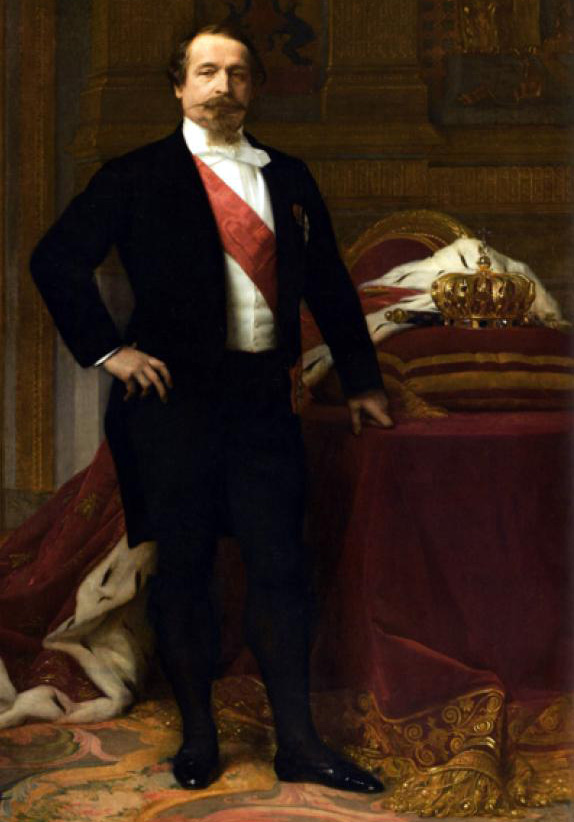
Napoleon III
The emperor himself carefully monitored his appearance, had his own English tailor - Henry Creed. It was then that he brought into fashion a long pomaded mustache and a Spanish goatee beard.
Empress Eugenia - biography and style
Empress Eugenie (Eugenia de Montijo, Countess de Teba) was born into the family of Count and Countess Teba in Grenada on May 5, 1826.
Spanish by blood, Eugenia was raised in French literature. Her French teacher was Stendhal, and a family friend for many years was Prosper Mérimée. Evgenia received an excellent education. She was famous not only for her education, but also for her beauty. At the age of 27 in 1853, she married the Emperor Napoleon III.
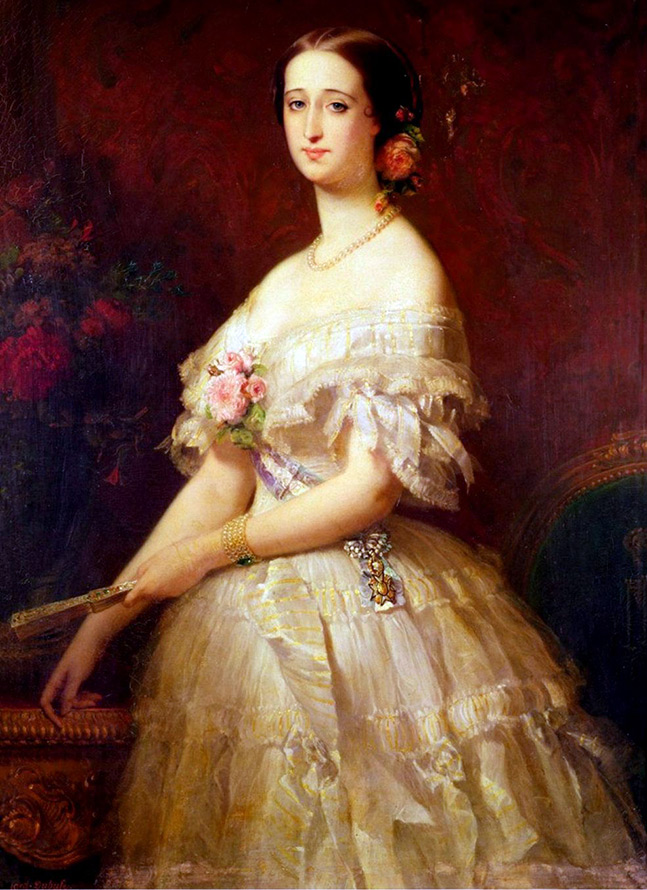
Empress Eugenie
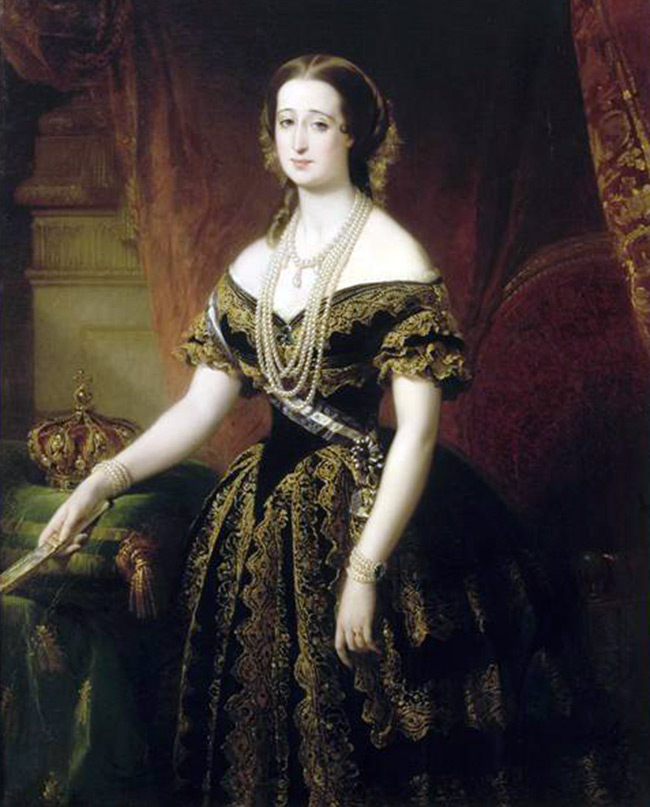
Napoleon III and his wife were both passionate about the style of the 18th century and sought to revive it.
After her marriage, Empress Eugenia became a trendsetter for the whole of Europe. The personal tastes of the empress and her entourage formed the fashion of the 50s - 60s. XIX century.
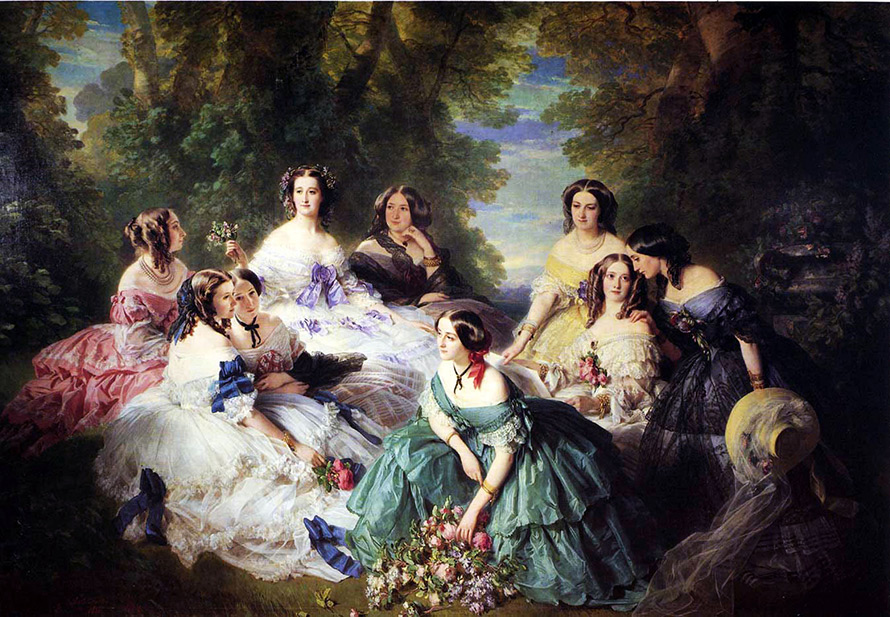
At court, she established a kind of cult Marie Antoinette... The empress admired the style of the queen, who tragically ended her life on the guillotine. She searched for her furniture, picked up and ordered copies of items loved by the Queen for her residences. The Little Trianon at Versailles was restored, where Eugenia collected the things of the executed queen.
In Winterhalter's painting, the Empress is depicted in a ball gown a year after the wedding - a dress on a large crinoline, covered with white and saffron silk, decorated with black bows, cords and fringe, a hairstyle with powdered hair.
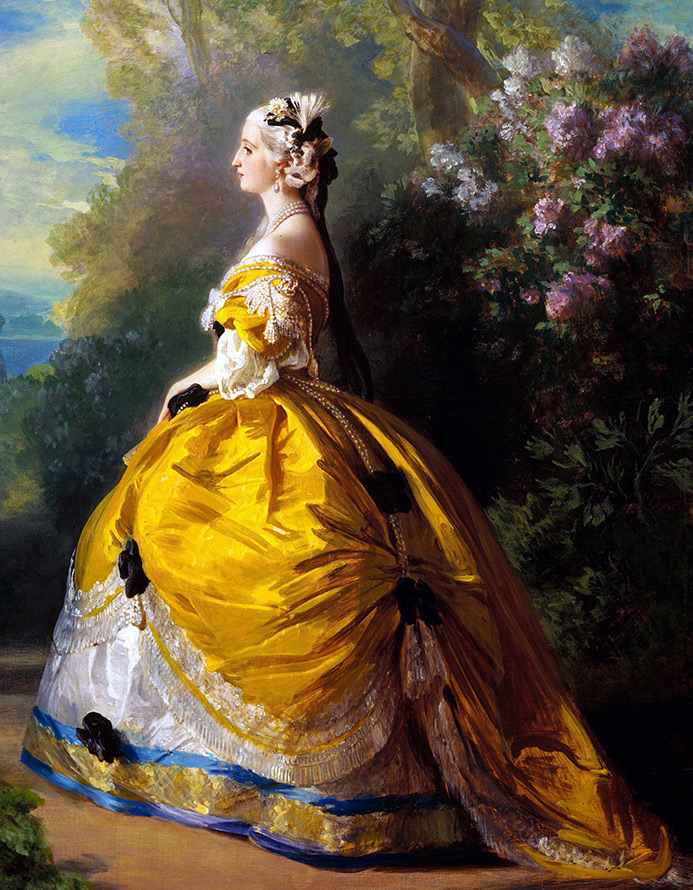
Charles Frederick Worth became the creator of dresses for the imperial court, as Guerlain - the famous perfume ... He possessed an extraordinary gift of an artist, and in his, at first a small atelier, Worth was both a fashion designer and a cutter. New to the House of Worth was the crinoline, which was wider at the back than at the front. The first high-society customer was Princess Metternich, on whose recommendation Empress Eugenie made Wort a court tailor, which marked the beginning of his prosperity.
The first Fashion House, the House of Worth, was founded in Paris. Worth became a major trendsetter in Paris and amassed a huge fortune. His businesses flourished so much that they attracted the attention of not only fashionistas, but also famous writers of the time, such as Emile Zola, who immortalized Worth in his novels, Ladies' Happiness and Trap.Worth skillfully used events that aroused everyone's interest - for example, sympathy for the liberation struggle of Italy, for its national hero - Giuseppe Garibaldi, short velvet outerwear for women and a low velvet hat - "a la Garibaldi" were created.
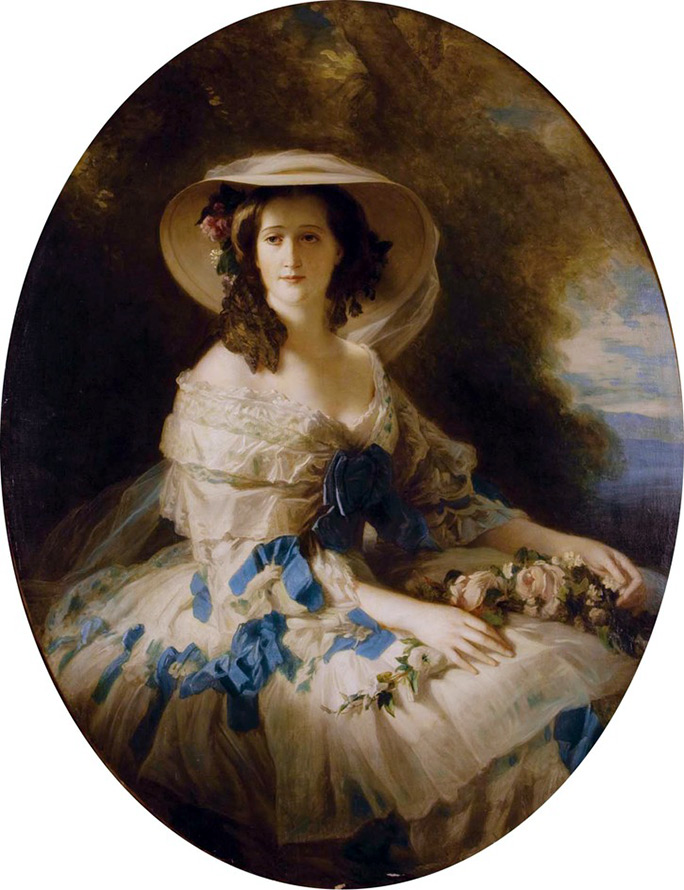
During the reign of Napoleon III, Empress Eugenia introduced a fashion in Europe for comfort, travel, perfume, large hotels, and rest on the coast. It was for his wife that Napoleon III built in Biarritz the famous Hotel du Palais - Villa Eugenie. Paris has attracted many tourists from all over the world. And even a travel souvenir industry was created. The imperial couple loved most of all the suburb of Paris - the Tuileries.
Paris has become a supplier of all kinds of luxury novelties to the fashion market. And his influence in Europe increased even more, even in London, especially after 1861, when Queen Victoria lost her beloved spouse, Prince Albert, and plunged into deep mourning. It was during this period that France became the largest producer of perfumery. Pierre-François Pascal Guerlain created the Eau de Cologne Imperial, which delighted the Empress and became a court perfumer. This was followed by wonderful aromas: Parfum Imperial, Parfum De France, Parfum d 'Imperatrice, Bouquet Napoleon.
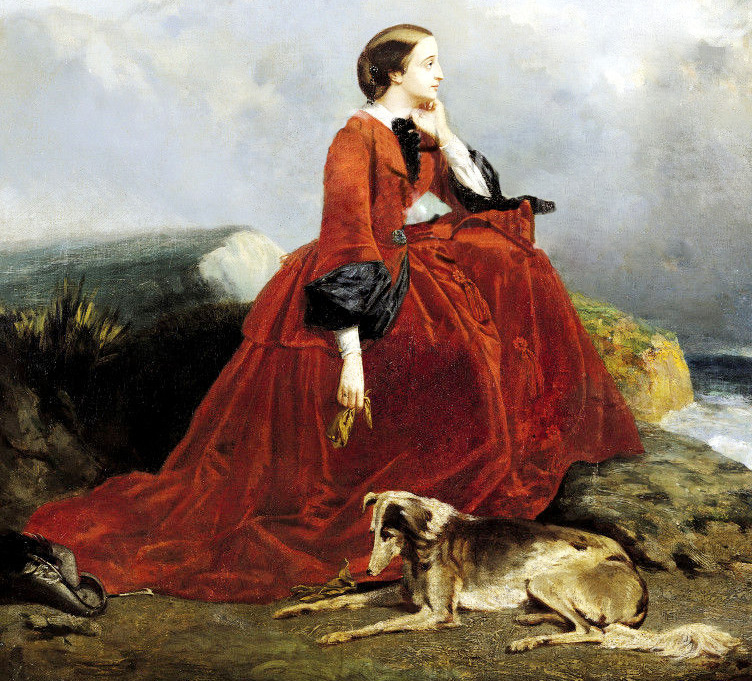
The Empress loved painting, and among many artists she singled out the German portraitist Winterhalter, who painted most of her portraits. The artist became popular in the circles of the nobility and became famous for a huge number of portraits of secular beauties.
The aesthetic ideals of France were shaped by the influence of Empress Eugenie herself. The style of Empress Eugenie is called the Rococo style, which is based on the imitation of the artistic forms of French art of the middle of the 18th century. Both in the costume and in the interior, one can trace the desire to revive the character of the fine art of the past century with its sophistication and elegance. Separate elements, borrowed from the Rococo style, appear, the crinoline returns, which has the shape of a dome, and then a bell, and consists of metal rods.
Dresses on crinolines in the era of the second Rococo were lighter than the previous ones, the volume of which was formed from several petticoats on the hair. However, these owners of such dresses were also very uncomfortable. For example, it was not easy to sit down or lie on the green lawn, because in the 50s - 60s of the 19th century it became fashionable to go out of town on funny picnics - the ladies looked just ridiculous, and sometimes the hoops broke.
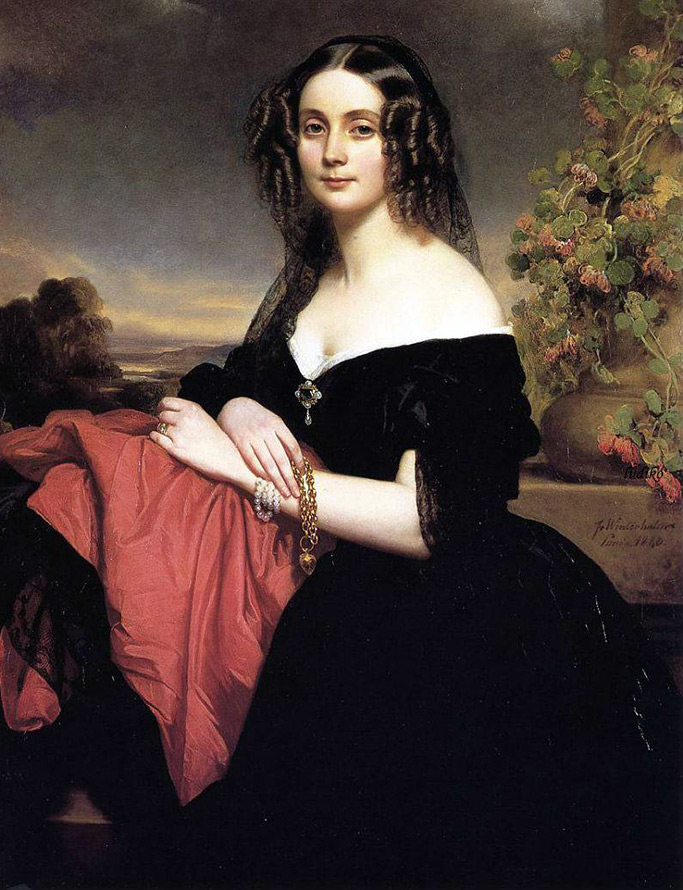
Images of the era of Empress Eugenia in the paintings of the artist Winterhalter
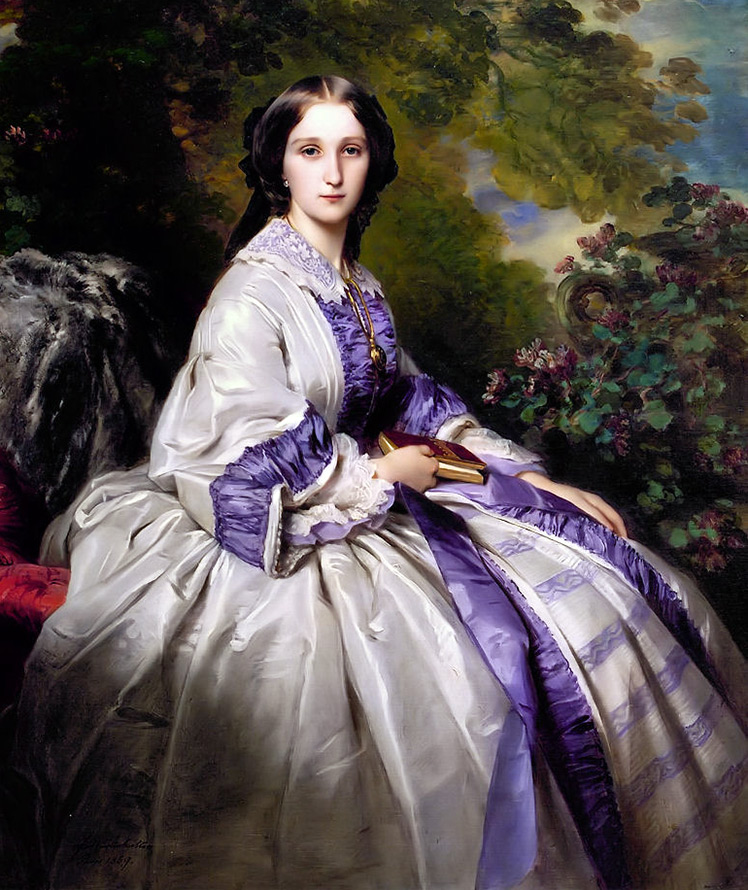
The silhouette is built around the creation of a well-defined triangle with a wide base. The décor of the costume is created horizontally, which makes the whole look somewhat overloaded and down-to-earth. The bodice of the dress was cut with deep darts for a snug fit and ended in a long cape in front. The shoulders were lowered, the waist was narrow. Sometimes the bodice had a peplum that looked like a jacket. The sleeves widened downward with a bell and created a smooth line from the sloping narrow shoulder to a wide, voluminous skirt.
Widened sleeves, overloaded decor made the lower part of the figure heavier, so the shoulders seemed narrower, and the waist - thinner. Plain bodice dresses were also made with bell sleeves, which ended in lace or smooth cuffs. Ball gowns had deep necklines and short sleeves, but at the same time they were puffy, which were finished with frills, laces, and ribbons. Sometimes the sleeves were completely absent, the bare shoulders were covered with a wide collar - "berta".
In ballroom dresses there were always huge crinolines. On skirts, such light fabrics as tulle, gauze were draped, on which there were garlands of flowers or flounces of lace, ribbons, satin, taffeta. The fabrics for such outfits were huge, sometimes up to 15 meters. The print of the fabrics was with floral patterns, a strip, a cage, there were also relief patterns on smooth fabrics, which created an extraordinary effect.
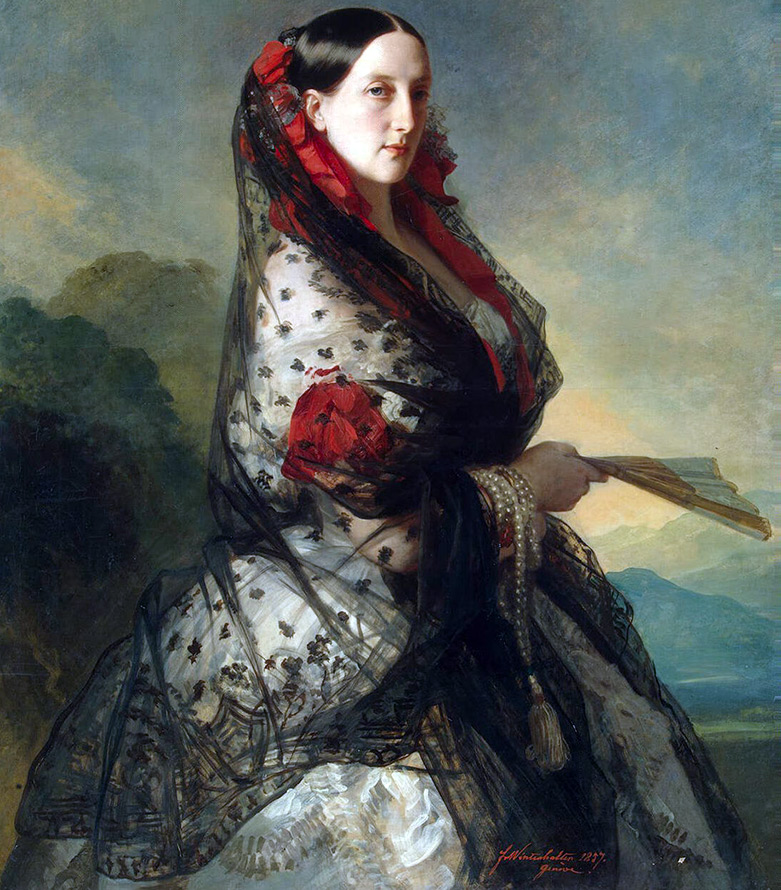
Images of the era of Empress Eugenia in the paintings of the artist Winterhalter

For flounces, coupons were issued with patterns located along the edge. Ruffles, fringe, braid, all sorts of cords and laces were used as decor. The decor is becoming more diverse and sophisticated. In addition to everything, the ladies adorned themselves with jewelry - large necklaces, bracelets. On the canvases of the artists of those years, you can see not one large bracelet on the beauties' hands, but several. It was in this decade, in the 50s, that photography appears, which gives us the opportunity to approach the real historical costume.
The hair is whipped and curled, placed in a fluffy roller, the entire mass of hair is pinned into a bun, which is located low on the neck. Along with this hairstyle, heavy curls were also worn, located along the face. The hairstyle is decorated with lace headpieces, artificial flowers, ribbons.
Hats in the form of a hood with a small crown were worn closer to the back of the head. Winter hats were made of plush, velvet, thick silk. And in the summer, ladies wore round florentine flat hats made of Italian straw with a high or low crown, wide brim, with a slightly lowered front and drooping down at the back, as well as English straw hats with wide brim.
Worth invented the little hat, which was first worn by his wife, Maria Worth, the Bavole hat.
Outerwear is mantilla, capes with a great abundance of decor, large shawls. In the ladies' dress, a prominent place is occupied by a jacket - wide and loose, tight-fitting and semi-fitted, summer ones with short sleeves, and winter ones with fur. The "Cossack" jacket tightly fitted the figure, had a fastener high up to the neck and a wide peplum. And this item of women's dress was decorated with an abundance of decor - it had braids, braid, embroidery, many buttons, cords. But it could be smooth without an abundance of decor.
It was from this time that the emergence of a suit - a jacket and a skirt, which acquired the significance of a visiting street toilet, can be considered. In the same years, the development of railway and water transport began, and this required special clothing for travel - Bedouin and burnus capes appeared, which were embroidered in an oriental manner, a hood, a plaid, a dressing coat and other travel coats became popular.
It was in the 50s that short and long coats appeared as outerwear for women. But the form of outerwear has always been dictated by the volume of the dress, so then all kinds of capes gained great popularity. But the most favorite outerwear was shawls.
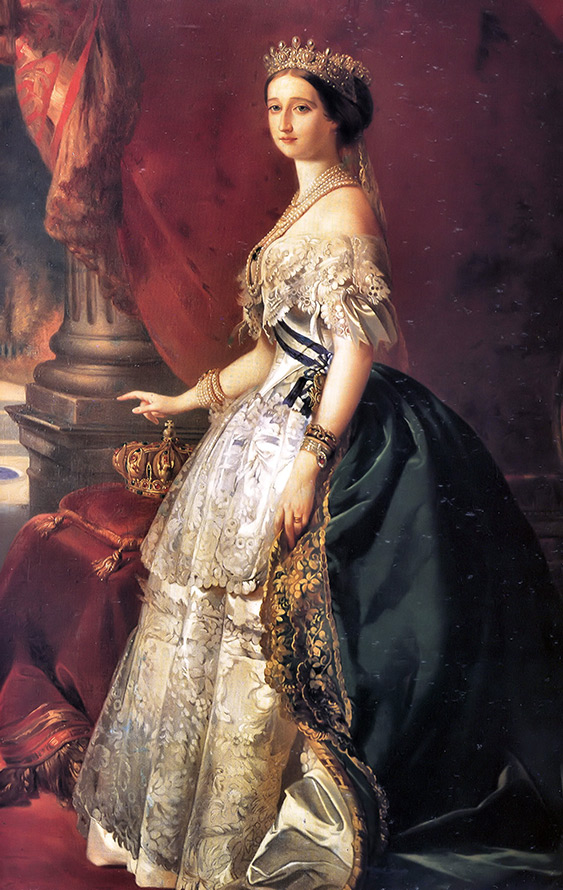
In 1867, the House of Worth introduced skirts without crinoline. The dress in the painting "Spring" by Alfred Stevens represents exactly what was in this period, when the crinoline was taken out of fashion, and the bustle had not yet had time to take its leading role in the women's outfit.
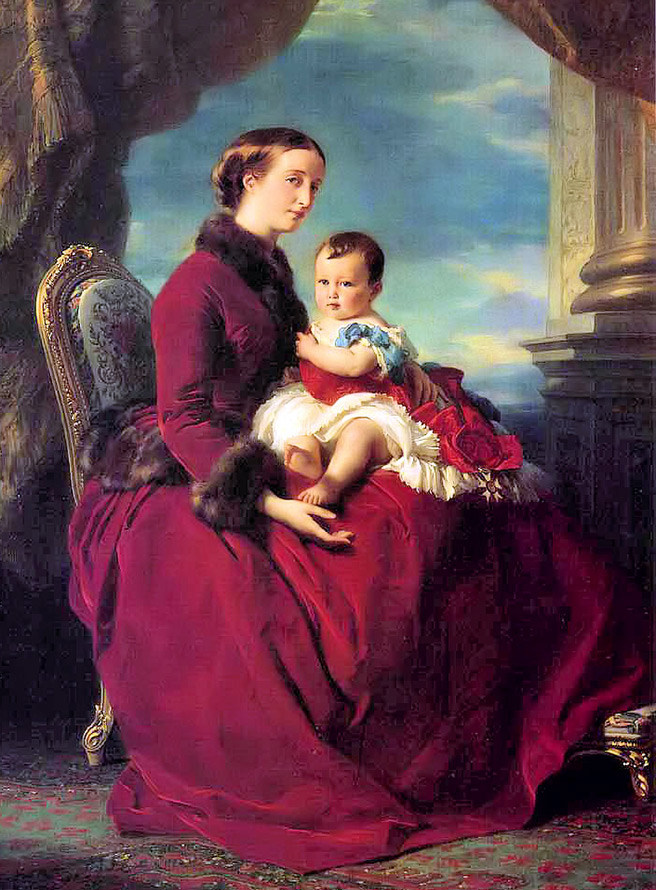
The color scheme of the 50s - 60s was varied, everything depended on age - girls and young women wore dresses of light color - white, cream, ivory, pink, blue, yellow of different shades, older ladies chose green colors of various shades, brown ... Elderly ladies could choose a dress of light gray, lilac or lilac colors as an elegant dress.
Black dresses were worn as mourning. It was possible to sew an evening dress or outerwear, for example, shawls, from black velvet. In the 60s, the color was widespread - "the color of the Nile water" - turquoise, in connection with the construction of the Suez Canal. In the 50s, aniline dyes appeared, which made it possible to dye fabrics in the most unprecedented shades.
One of the most fashionable accessories was umbrellas. They were made of silk or chintz, decorated with applique, flowers, lace, trimmed with ribbons and fringes.
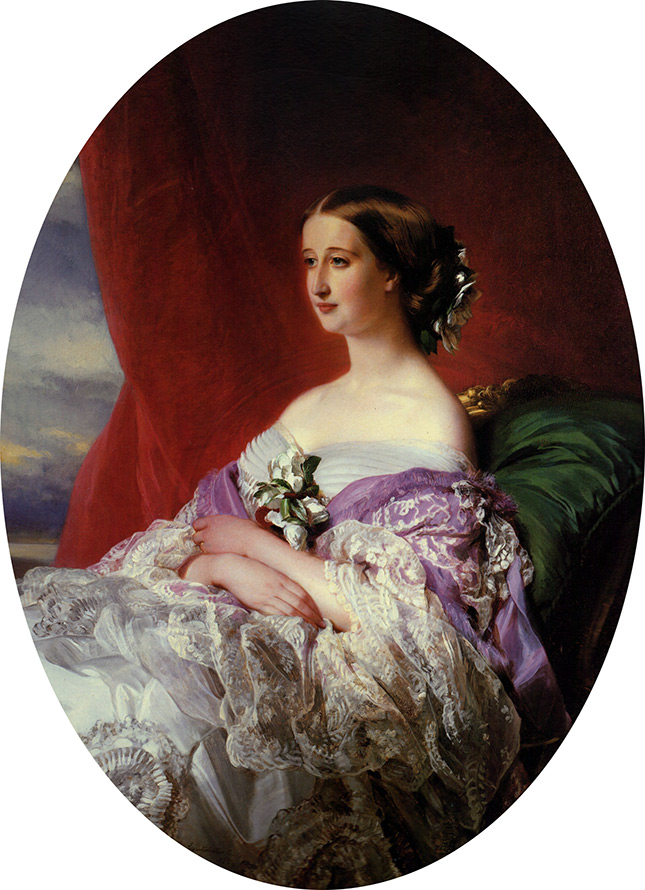
After the fall of the empire as a result of the Franco-Prussian war, the emperor and his family fled to England, where Napoleon III died in 1873, and Empress Eugenie lived a long life in exile and died in Madrid in 1920.
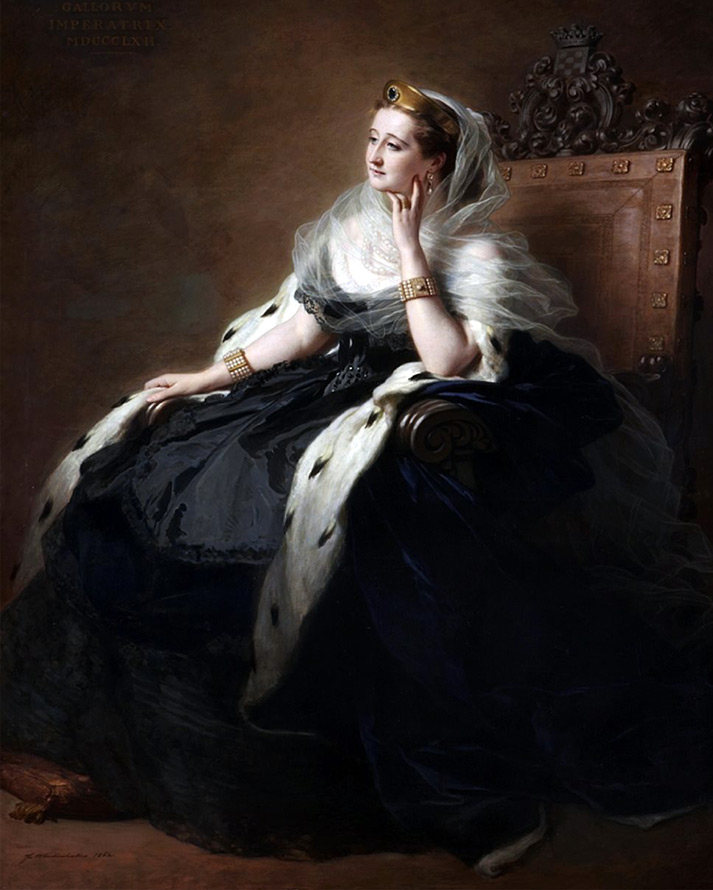
Perhaps the word "fashion" for some people sounds a little frivolous or even crazy, but in fact fashion expresses the lifestyle of society, and any change in cut, details of clothing is a craving for change. And every person, whether he likes it or not, is forced to submit to these changes.
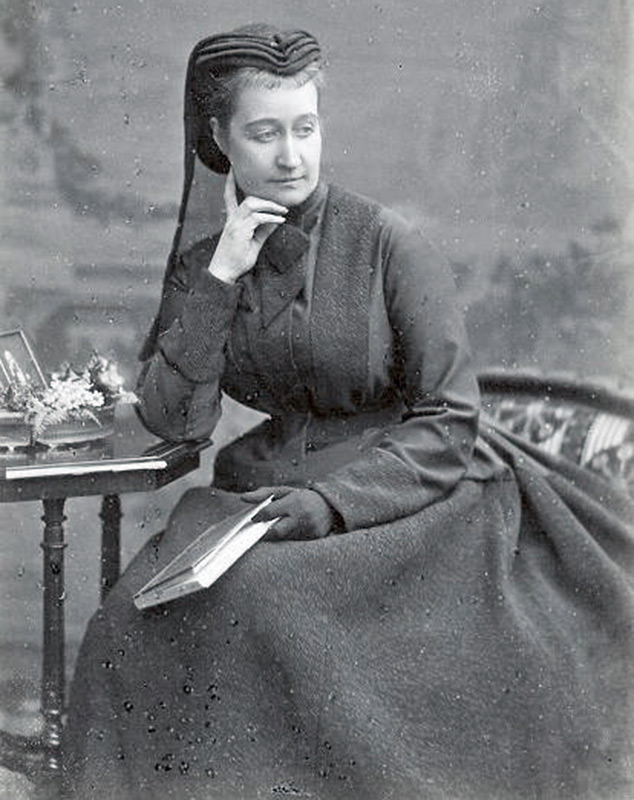
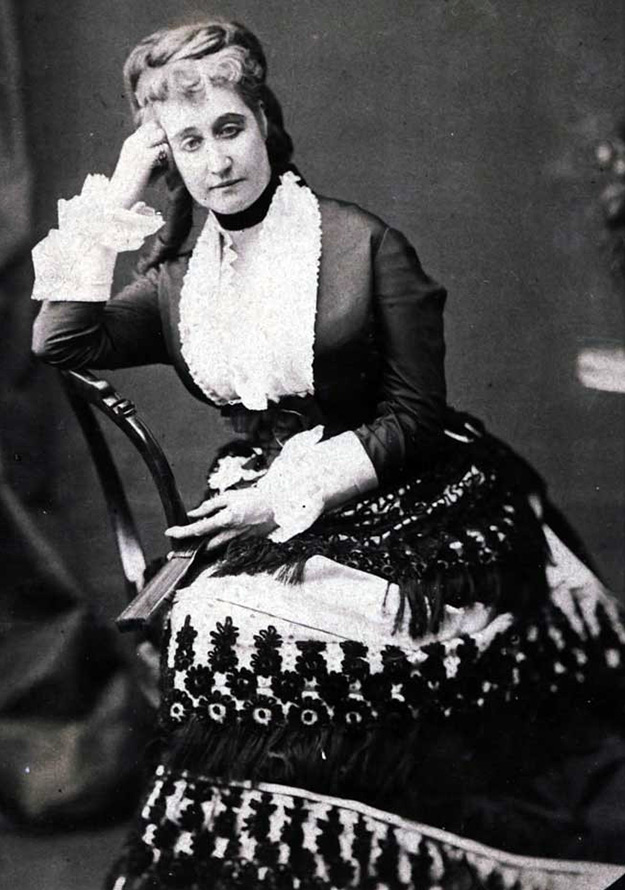
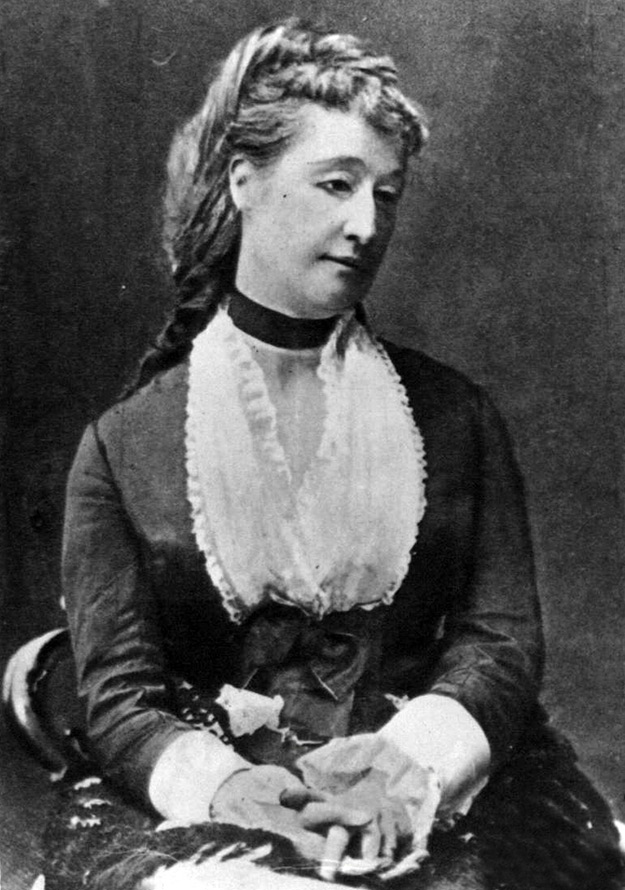
Comments and Reviews
Add a comment
Rating news
Shades of clothing that make women look younger
What shades of hair make women younger: rules and photos
Funny wedding dresses - photos and ideas
12 most expensive down jackets for the winter
How to look 25 at 40: tips from supermodels
Beautiful schoolgirls
Anti-aging haircuts and hairstyles for women
Fashionable skirts for autumn and winter
Fashionable women's trousers for the cold season
Fashionable and stylish sandals for summer 2024
Spring-summer 2024
 Fashionable dresses and tops with thin spaghetti straps
Fashionable dresses and tops with thin spaghetti straps
 Bandana tops: how to wear stylishly and beautifully
Bandana tops: how to wear stylishly and beautifully
 How to put together the perfect men's wardrobe for the summer
How to put together the perfect men's wardrobe for the summer
 Trendy shorts for spring-summer 2024
Trendy shorts for spring-summer 2024
 Fashionable skirts for spring-summer 2024: a guide to online shopping
Fashionable skirts for spring-summer 2024: a guide to online shopping
 The most fashionable dresses spring-summer 2024: styles and colors
The most fashionable dresses spring-summer 2024: styles and colors
 Fashionable total look 2024: image ideas and trends
Fashionable total look 2024: image ideas and trends
